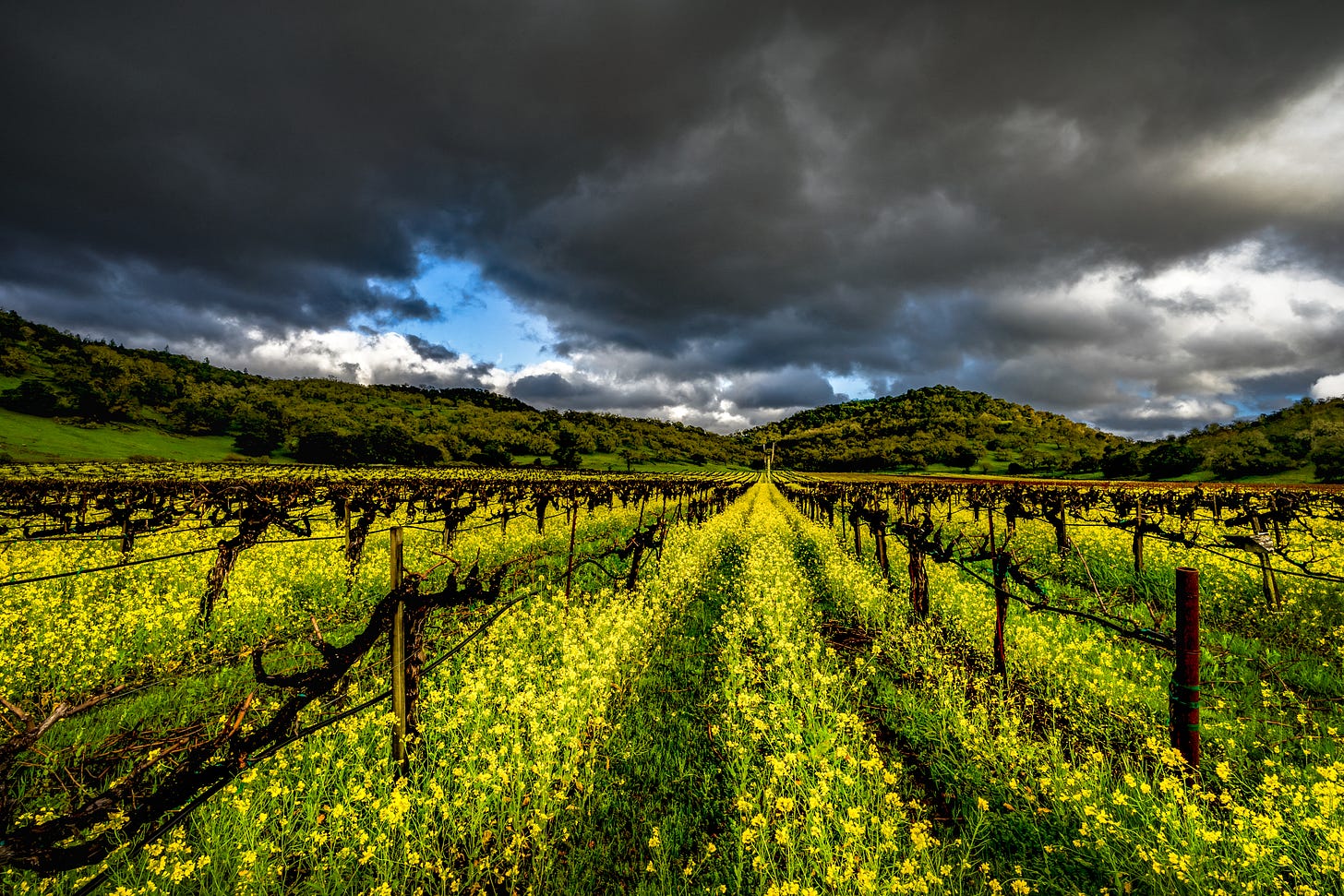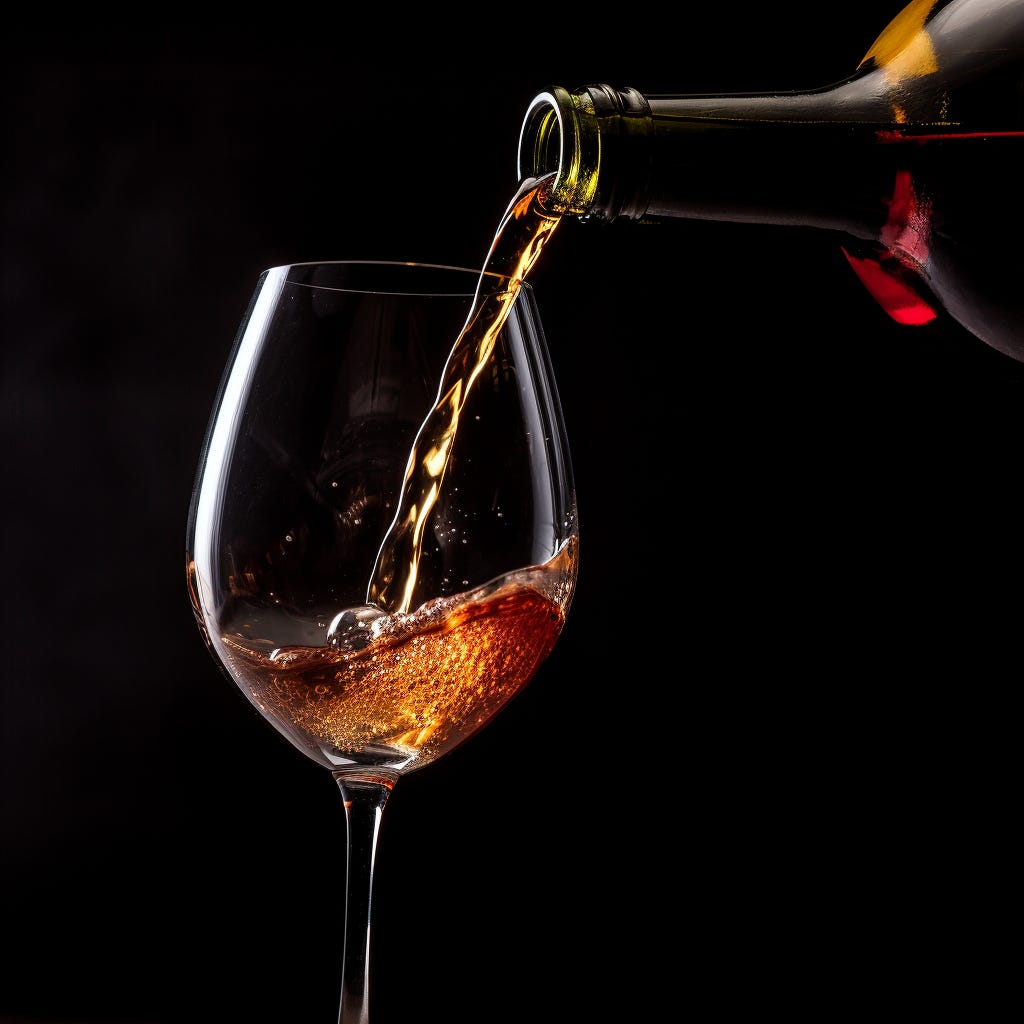As 2023 draws to a close, we're dedicating the final two weeks to a retrospective countdown of the year's most-read stories. Spanning a broad spectrum of subjects, these pieces mirror the varied curiosities of our audience and pave the way for an exciting 2024. Join us as we revisit these highlights.
Original run date: Oct. 3, 2023
NAPA VALLEY, Calif. — Napa Valley wineries confront a growing set of challenges, including regulatory shifts, evolving tourist preferences and market volatility. Known worldwide for its wine, the region has historically been guided by the 1968 Agricultural Preserve. However, ambiguity has been introduced into the regulatory framework by the Winery Definition Ordinance, which was initiated in 1990 and later amended by Ordinance No. 1340 in 2010 and then further complicated by the Micro Winery Ordinance, which passed in March 2022. These are all ordinances intended to help small wineries compete and thrive, but they have often resulted in confusion and contention. Combined with intensifying competition, waning consumer interest in wine and declining tourist numbers, this multifaceted landscape results in ongoing challenges.
As they navigate these difficulties, some wineries are choosing to challenge rule interpretations, ignore regulations with which they disagree or seek clarity and exemptions. While these approaches might be justifiable to some extent, they are fueling an increase in legal disputes and community tension and frequently blur the lines between market-driven forces and real or perceived regulatory injustices.
Summary of key points found in this article:
Napa Valley wineries face myriad challenges that include regulatory changes, shifting consumer preferences and market volatility.
The 1968 Agricultural Preserve historically guided the region, but subsequent ordinances such as the Winery Definition Ordinance and Micro Winery Ordinance have muddled the regulatory landscape.
Some wineries are circumventing or challenging rules, leading to increased legal disputes and community tensions.
Surge in wineries: A more than 300% increase in winery licenses from 2008 to 2023 indicates an oversaturated market.
An estimated 3,000 locations in Napa Valley can now offer alcoholic beverage tasting, but visitor numbers have been inconsistent, exacerbating supply-demand imbalances.
Generational shifts in alcohol consumption patterns show declining interest in wine, particularly among younger demographics.
The intricacies of today's wine market are magnified by the rise of multiple alternative locations, both within the United States and globally, that are actively marketing themselves as competitors to the Napa Valley for gourmet-food and fine-wine experiences.
Oversupply issue: Calculations indicate an overwhelming oversupply of wine that the current tourist numbers can't absorb, posing questions about sustainable growth.
Regulatory ambiguities and community tensions create a favorable environment for larger wineries and outside investors to acquire smaller, devalued targets.
Despite the success of the Agricultural Preserve in protecting local land, it faces ongoing threats due to ambiguous ordinances and increased competition.
Stricter regulations, business failures and legal confrontations are likely outcomes, making this period potentially one of the most contentious in Napa Valley's history.
Thousands of places to taste wine in Napa Valley
The American wine industry has seen robust growth, with the Wines Vines Analytics Winery Database recording a total of 11,691 wineries in the United States as of the latest data — up by 1,215 from 2020. California is a significant player in this growth, housing nearly 5,000 of these wineries.
Data from the California Department of Alcoholic Beverage Control add numerical context to this shifting landscape. A variety of different licenses allow for businesses to serve wine. In 2008 Napa County had 557 Type 02 winery licenses. By 2023 that number has swelled to 1,872 — a more than 300% increase. Some wineries hold multiple Type 02 licenses: one for winemaking operations and others for tasting rooms. Additionally, there are 594 wine distributors with a Type 20 license and 590 wine wholesalers with a Type 17 license.
As of 2023, Napa County is home to at least 112 stand-alone tasting rooms, according to data from the Visit Napa Valley website, as well as more than 500 physical wineries. The experience extends beyond wine to include tasting rooms for beer, whiskey, brandy and sparkling wine, all vying for consumer attention.
But wineries and tasting rooms aren't the sole venues for sampling wines. Restaurants also serve wine. In 2023 Napa County had 125 Type 41 licenses allowing beer and wine sales at restaurants and 115 Type 47 licenses permitting the sale of beer, wine and spirits. Moreover, the county has issued hundreds of caterer licenses for food provisions at wine tastings.
Altogether, nearly 3,000 locations across Napa Valley offer visitors the chance to sample alcoholic beverages, often while enjoying carefully prepared food.
Doing the math
Of course this must all be viewed through the lens of consumer demand. Visitor numbers to Napa Valley have been inconsistent. Take 2018, for example, which saw nearly 4 million visitors, a high-water mark for tourism. Based on a family unit comprising two adults and two children, an estimated 1 million families, or 2 million adults, made the trip. National averages suggest around 60% of these adults — 1.2 million — are likely to consume alcohol. Further, about 30% of those adults, or 360,000, would choose wine. Broken down over a year, that's an average of 986 wine-preferring adults visiting the Napa Valley daily. Given an estimated 3,000 places to taste wine, each venue would interact with these enthusiasts about 2.3 times a week.
According to Wine Business Analytics, U.S. wineries produced an estimated 330 million cases of wine in 2022. California's production was particularly dominant, making up 85% of the national output, which equates to around 280.5 million cases. Despite its global fame, Napa Valley contributes a relatively small percentage to California's overall production — just 4%. This amounts to approximately 11 million cases or 132 million bottles annually.
The complexities of today’s market are further intensified by an abundance of alternative locations vying for recognition as wine destinations. A decade ago, options for experiencing gourmet food and fine wine in the United States were relatively limited. Now, however, nearly every state — and indeed, almost every country — is marketing its own region as a worthy competitor to Napa Valley.
Doing the math reveals a sobering reality. Even if every wine-preferring adult bought a case during their Napa visit, about 10.6 million cases would still need to find buyers. And to purchase even half of all the wine made would take 61 million visitors. Even considering the possibility that Napa Valley visitors are not “average” and are more inclined toward wine, even assuming all 4 million bought 12 bottles each still leaves 7 million cases. However, speaking from experience as a former winery owner, it's uncommon for customers to buy a case in one go.
While local tourism agencies might argue the real value of these visitors lies in the transient occupancy tax and the patronage of other local businesses, that doesn't alleviate the immediate concerns for winery owners. With little to no share in these additional revenues, many wineries find themselves grappling with an oversupply issue that poses serious questions about sustainable growth and market saturation.
Shifting preferences
Baby boomers, born between 1946 and 1964, have long been essential consumers for Napa Valley, showing a preference for established wine varieties and valuing in-person interactions. These tendencies have significantly influenced the identity and offerings of the area's wineries, but they are decreasing their wine consumption as they age. Generation X, born from 1965 to 1980, is still consuming wine but has veered toward experimentation and a focus on sustainability. Millennials, born between 1981 and 1996, have amplified these tendencies toward both experimentation and ecological consciousness, but they are also shifting away from wine.
Generation Z, born from the mid-1990s to the mid-2010s, is instigating further shifts. Industry data reveal a diminished interest in wine among this group, with preferences shifting toward a wider array of alcoholic options, such as whiskey and tequila, as well as nonalcoholic alternatives. This trend is not momentary; sales data show a significant increase in market share for spirits and a consistent, albeit moderate, decline in wine sales.
Social dynamics underscore a trend away from alcohol consumption, spearheaded by Generation Z and the so-called "sober-curious" movement. Whether motivated by health concerns, social issues or personal preferences, a growing proportion of younger consumers are selecting alcohol-free options, such as mocktails and nonalcoholic beers and spirits.
While some experts in the wine industry forecast that Generation Z will eventually develop a more favorable disposition toward wine as they age or are exposed to more targeted marketing, the current trend poses immediate concerns for wineries. The waning interest in wine, particularly among younger demographics, exacerbates pre-existing challenges for regional wineries. These establishments already struggle with an imbalance between supply and demand, and now they are confronted with the unsettling prospect that a decreasing share of tourists will be interested in what has long been the area's main attraction.
A labyrinth of challenges
The regulatory environment in the Napa Valley is far from set in stone. While county officials once turned a blind eye to minor violations in the spirit of supporting local enterprise, the atmosphere has changed dramatically. A surge in new wineries and ambiguities in the 1990 Winery Definition Ordinance have contributed to this shift. On top of that, the murky language in Ordinance No. 1340 is increasingly being used to justify expansion of winery offerings, upsetting local sentiment and prompting stricter enforcement. The result? A wave of lawsuits and rising community tensions.
For larger wineries and outside investors, this climate of legal snags and local discord represents a strategic opportunity for acquisitions. Legal complexities and community tension effectively devalue potential acquisition targets, enabling larger entities to negotiate favorable terms.
The Agricultural Preserve was designed to protect Napa from the unchecked development experienced by other Bay Area communities. And it has been a wild success by allowing Napa County to avoid the fate of so many other local formerly agricultural communities such as Silicon Valley. Nevertheless, it faces ongoing threats to its integrity. Ordinances with ambiguous language and unsettled legal precedence lead to multiple interpretations, complicating an already fiercely competitive and increasingly contentious marketplace.
It is likely not strict regulations or lack of marketing but simply oversupply and slacking demand for wine that is at the root of today’s challenges.
Nevertheless, stricter regulation seems inevitable, as do business failures, increased acquisition by bigger businesses and an increasing likelihood of legal confrontations that not only consume resources but also deepen community divisions. Napa Valley has, in a sense, become a victim of its own success. As tourism and per-capita wine consumption are expected to decline and as more and more newer wineries bring mature wines to market, the region may be entering one of the most contentious, litigious and turbulent periods in its history.
Tim Carl is a Napa Valley-based photojournalist.







